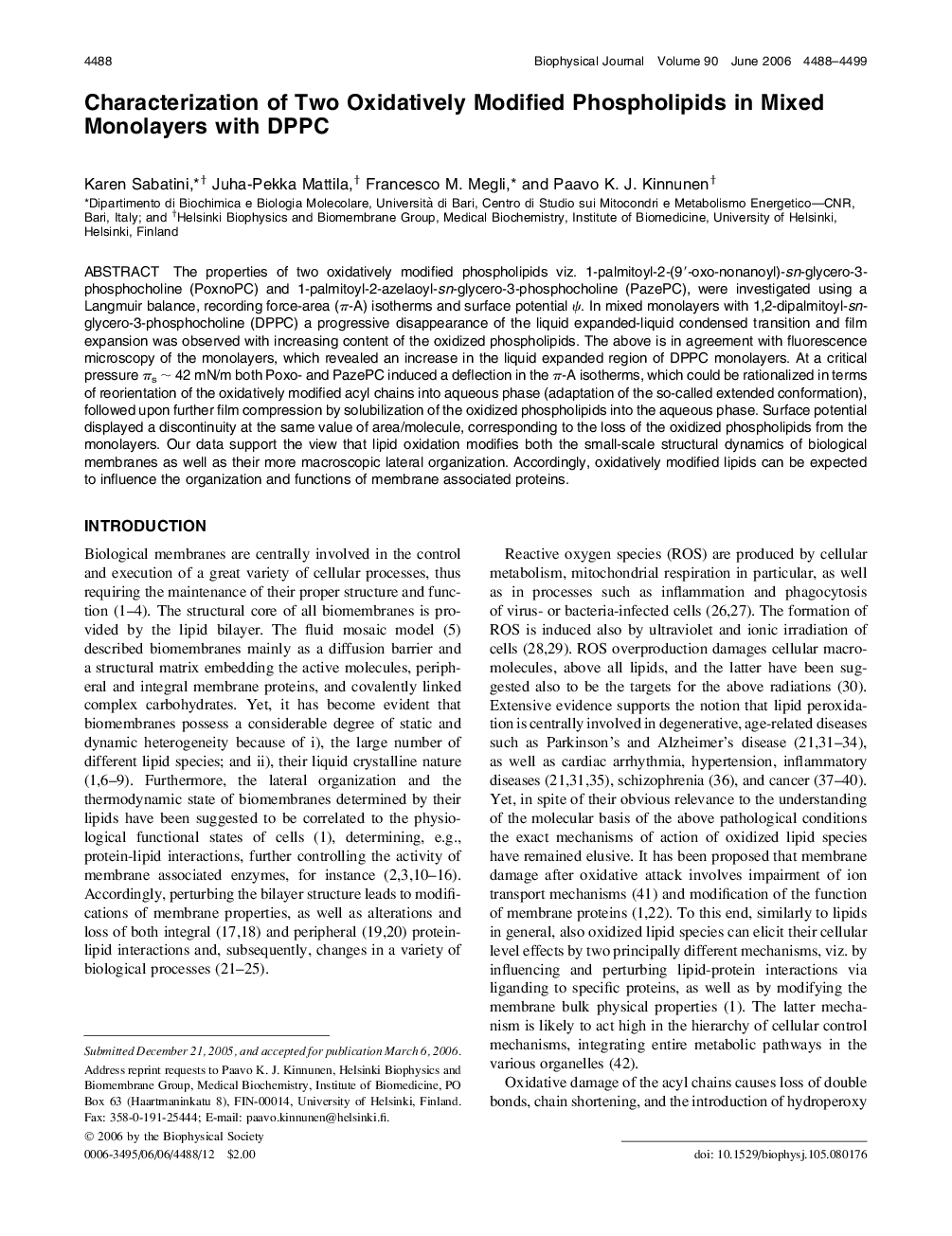| Article ID | Journal | Published Year | Pages | File Type |
|---|---|---|---|---|
| 1958730 | Biophysical Journal | 2006 | 12 Pages |
The properties of two oxidatively modified phospholipids viz. 1-palmitoyl-2-(9′-oxo-nonanoyl)-sn-glycero-3-phosphocholine (PoxnoPC) and 1-palmitoyl-2-azelaoyl-sn-glycero-3-phosphocholine (PazePC), were investigated using a Langmuir balance, recording force-area (π-A) isotherms and surface potential ψ. In mixed monolayers with 1,2-dipalmitoyl-sn-glycero-3-phosphocholine (DPPC) a progressive disappearance of the liquid expanded-liquid condensed transition and film expansion was observed with increasing content of the oxidized phospholipids. The above is in agreement with fluorescence microscopy of the monolayers, which revealed an increase in the liquid expanded region of DPPC monolayers. At a critical pressure πs ∼ 42 mN/m both Poxo- and PazePC induced a deflection in the π-A isotherms, which could be rationalized in terms of reorientation of the oxidatively modified acyl chains into aqueous phase (adaptation of the so-called extended conformation), followed upon further film compression by solubilization of the oxidized phospholipids into the aqueous phase. Surface potential displayed a discontinuity at the same value of area/molecule, corresponding to the loss of the oxidized phospholipids from the monolayers. Our data support the view that lipid oxidation modifies both the small-scale structural dynamics of biological membranes as well as their more macroscopic lateral organization. Accordingly, oxidatively modified lipids can be expected to influence the organization and functions of membrane associated proteins.
